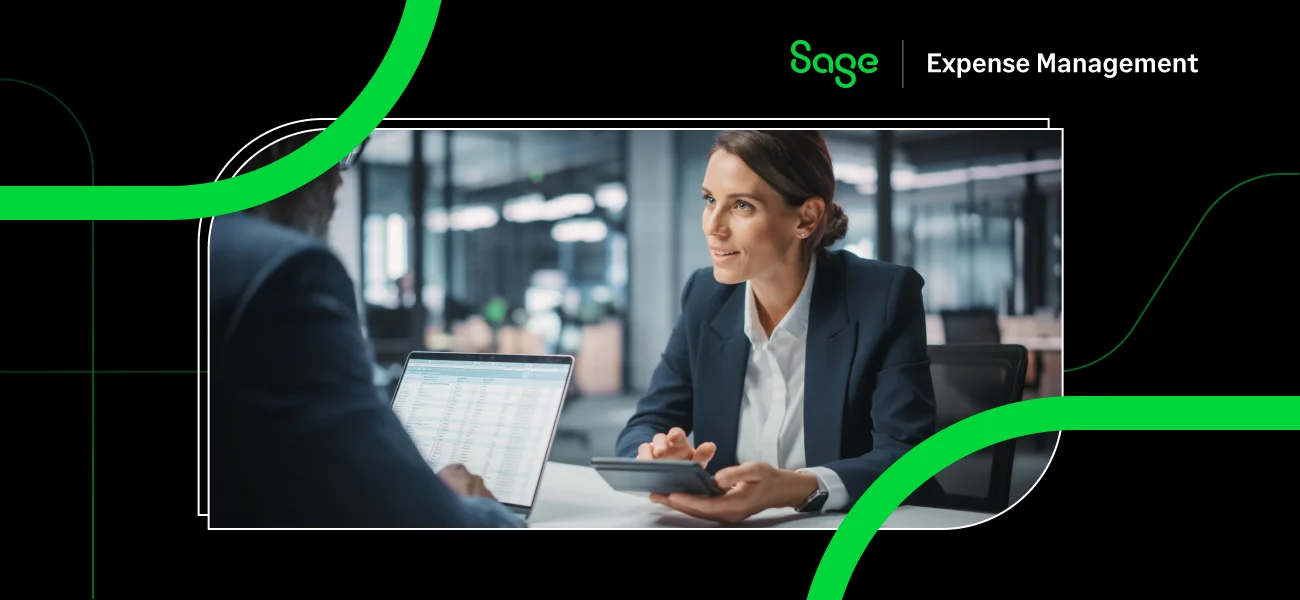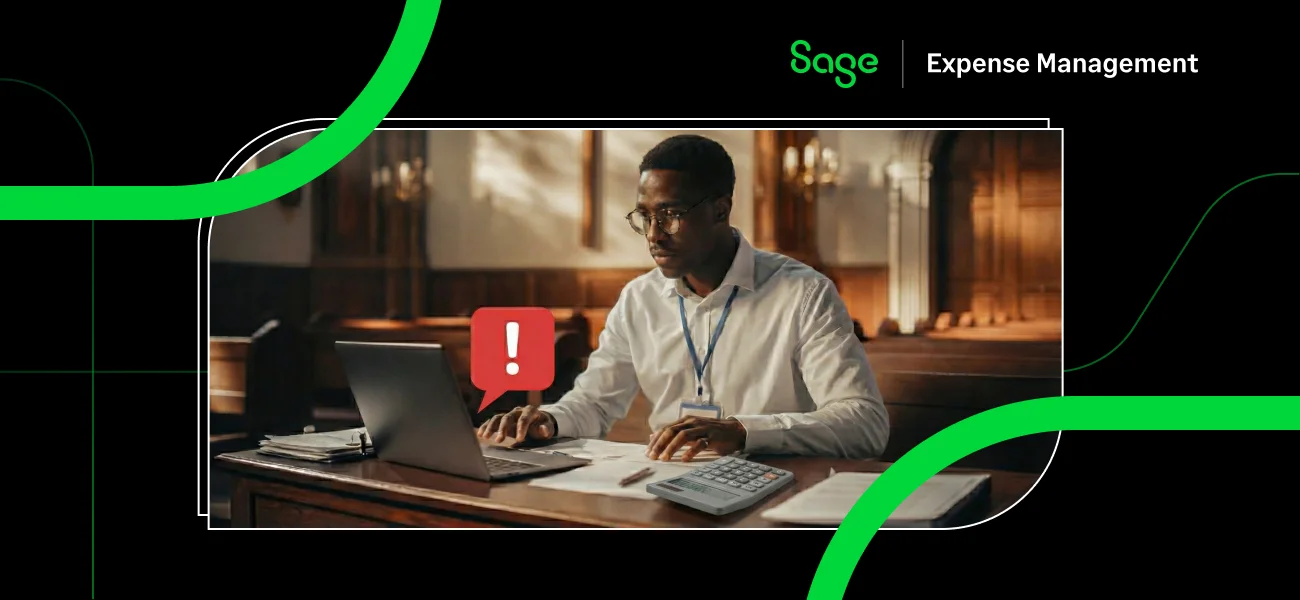Double-checking your expenses doesn’t sound all that difficult, and it isn’t. For the individual, at least. When it comes to large businesses with hundreds or even thousands of people using company assets, keeping your financial accounting straight becomes infinitely more complex.
That’s why we’ve put together a guide to expense reconciliation. How it works, the potential roadblocks, and how to make it that much easier.
What Is Expense Reconciliation?

Expense reconciliation is the process of comparing and matching financial records related to business expenses. It involves checking that all the money spent by a business aligns with the recorded expenses in its accounting system. This process helps identify errors, discrepancies, or fraudulent activities.
While expense reconciliation may not be so difficult for small start-ups or self-employed individuals, larger businesses have so much more going on across different branches and departments to the point they might need enterprise collaboration software just to keep track of everything.
There are a lot of important reasons to reconcile your expenses, from conducting end-of-year reports and tax returns to monitoring budget and expenses. It’s essential to prevent things like:
- Over or underpaying
- Financial mismanagement
- Accidental or intentional fraud.
As such, it’s in your best interest to make sure you’re reconciling expenses correctly.
The need to double-check figures is as old as the concept of business itself. As such, companies have been doing manual expense reconciliation for a long time. Some still use paper records, meaning they literally have to go over the books.
These days, however, many organizations use spreadsheets customized with automated functions to record and monitor financial reporting. For example, the figures from things like expense claims or company credit card statements get entered into the database for easy cross-referencing.
This helps streamline things and limit human error compared to the pen-and-paper approach, but there’s still a large amount of manual work involved.
The Different Kinds of Expense Reconciliation

There are a few different kinds of expense reconciliation to keep track of. Most are business-related, covering the various ways companies spend money.
Personal Reconciliation
Personal reconciliation is the only non-business-based entry on this list. An example of personal reconciliation would be checking tax-deductible expenses against your receipts when filing your tax return. Compared to the sheer variety of business expenses, personal financial accounting is much simpler.
Business Expense Reconciliation
Regular business expenses include things universal to most businesses, like payroll and inventory costs. Other needs are industry-specific. For example, the budget to promote a holiday company’s travel packages or safety equipment for construction workers.
Also Read:
Customer Reconciliation
Reconciling customer expenses helps you stay aware of outstanding debts. While that’s more a matter of income than expense, it’s still an important part of broader budgeting concerns. You’ll also need to factor in any refunds to avoid accidentally creating imaginary profit or concealing real earnings.
Vendor Reconciliation
Vendor reconciliation means checking your financial statements against those of your suppliers. For example, recreational spaces like theme parks typically have vendors supplying food, drinks, or even small events. The fact that each business has its own record-keeping theoretically means it’s easy to double-check your work.
Bank Reconciliation
Bank statements and account histories are valuable fallbacks if your internal record-keeping fails. Your bank will have full records of all transactions related to your company’s expense accounts in the event you otherwise can’t resolve a discrepancy.
Why Is Expense Reconciliation Important?
Expense reconciliation is the cornerstone of financial health for any business. It’s more than just a numbers game; it’s a strategic tool that drives informed-decision making.
Expense Reconciliation as a Financial Health Indicator
By accurately matching expenses to income, you create a clear financial snapshot. This helps you understand your business’s profitability, cash flow, and overall financial performance.
Preventing Fraud and Errors
Regular reconciliation is your first line of defense against financial irregularities. It helps uncover discrepancies, identify potential fraud, and ensure the accuracy of your financial records.
Also Read:
Supporting Decision Making
With reliable expense data, you can make informed decisions about budgeting, cost-cutting, and resource allocation. This empowers you to optimize your business operations and maximize profitability.
Compliance and Auditing
Accurate expense records are essential for meeting tax obligations and passing audits. Reconciliation ensures you have the necessary documentation to support your financial claims.
Key Components of the Expense Reconciliation Process
Effective expense reconciliation involves the following key steps:
Data Collection
Gather all relevant expense data, including receipts, invoices, credit card statements, and employee expense reports. Ensure the data is complete, accurate, and accessible.

Data Verification
Review collected data for errors, inconsistencies, or missing information. Verify that all expenses are accurately coded and have supporting documentation.
Reconciliation
Compare expense data to accounting records, bank statements, and other relevant financial information. Identify and resolve any discrepancies.
Analysis
Analyze reconciled data and identify trends, patterns, or potential cost-saving opportunities. Use this information to improve financial performance. Sage Expense Management makes this quite simple:

You can analyze spend patterns across business credit card and reimbursable expenses, compare it across different time periods so you can make better decisions, all through simple conversations with CoPilot.
The Common Challenges Of Reconciling Expenses
Although it sounds straight-forward in theory, expense reconciliation in practice involves a lot of potential obstacles and frustrations. While it’s hard to predict everything that could possibly go wrong, here are some of the issues businesses regularly encounter.
Time-Consuming Manual Data Entry

While automated, streamlined software is fast becoming the norm, many businesses still rely on old-fashioned written record-keeping to at least some degree. Unfortunately, that means you have to painstakingly pore through the numbers by eye.
It’s one thing to manually record a single stream of regular expenses you know to expect along the way, like payroll or employee insurance. It’s another thing entirely to track down every one-off expense, like legal expenses, or that outbound sales strategy workshop that not many staff attended.
Even partial automation may not actually save you that much time, as you still end up having to re-record a lot of information in a digitized form.
Also Read:
The Number Of Expense Payers
Again, if all you had to do was check transaction records from a single source, corporate expense reconciliation wouldn’t be nearly such a headache. In medium-to-large businesses, however, there might be any number of people with company credit cards or expense account access in some capacity.
Financial accountants must often spend a lot of time chasing up every last bill and invoice for discretionary expenses to dot the Is and cross the Ts. In situations like these, you’re at the mercy of the quality of your record-keeping system. If it’s paper-based, documentation could be missing or damaged.
Human Error
The other issue with having so many people contribute to the mountain of expense information is that finances might not all be tracked to the same standards. People can easily forget to record payments or to carry the one in their sums. In fact, issues like these are why expense reconciliation is necessary to begin with.
Even if employees provide all the necessary financial information, they might record it in different formats, or in a way that’s unclear. All of this makes manual digitization that much more of a pain.
Also read:
Data Management And Scalability
With data from so many different sources in so many formats, you need to convert it all into a unified standard. This might mean using specialized software, or simply putting it all into a spreadsheet. Even so, converting large amounts of finance data from one format to another can be as time-consuming as actually studying it.
Conversion aside, you need to be able to store your data too, whether physically or digitally. On top of that, as your business grows, you might reach the limitations of how much data your system can adequately process.
How Sage Expense Management (formerly Fyle) Can Help Simplify Expense Reconciliation
Expense reconciliation is time-consuming and often challenging for businesses, especially if done manually. With Sage Expense Management, you can integrate with any business credit card, to simplify the expense reconciliation process.
Here’s how we can help:
- Automate expense reporting with features like automated receipt management, easy employee reimbursements, and AI-powered reconciliation, eliminating manual data entry and receipt handling.
- Your employees can submit expense receipts on the go via text message or the mobile app.
- Sage Expense Management integrates with your existing accounting and HRMS software, syncing data on expenses, receipts, cards, and more, automatically.

FAQs Around Expense Reconciliation
How Can I Improve The Expense Reconciliation Process?
With the leaps and bounds of computer technology over the past couple of decades, you’d be forgiven for wondering why companies haven’t embraced it for financial accounting and expense reconciliation wholeheartedly.
People can often be resistant to change. If something still works, why swap it out for something you’re not used to?
On top of that, there are tangible real-world resource costs associated with any corporate systems migration, such as licensing and installation costs, lost productivity during adjustment, and so on.
Even so, the benefits of a modern expense reconciliation process are too big to ignore. By changing the way your people work, you can free up their time and energy for what really matters.
Digitize
Aside from how slow they are to use, paper records are awfully perishable. So, not only are digitized records more efficient thanks to search bar utilities and keywords, they’re much safer too.
Sure, data loss, theft, and corruption are their own risks. But it’s much easier to have multiple virtual copies of your records stored in their own cyber-secure spaces.
On top of that, digitization is necessary to enable the next step in modernizing your expense reconciliation.
Automate
With virtual financial records, it’s possible to automate both the addition and analysis of financial data. Using a machine learning algorithm, you can check financial records against each other much faster than you would by eye.
We’re already seeing how AI customer service, for example, helps individuals complete or automate transactions and handle their finances. These sorts of algorithms can also help automate record-keeping for things like expense reports and company credit cards too. In theory, this helps to prevent human error and oversights.
Decentralize
As you digitize and automate financial accounting processes, you’ll find it easier to decentralize the burden of responsibility. Rather than your accounting team having to scramble to ensure receipt compliance and accuracy for every spending employee in the business, those staff members get the tools and knowledge necessary to supply their own record-keeping.
What Is The Difference Between Expense Reporting And Expense Reconciliation?
Expense reporting is the process of submitting expense claims for reimbursement, while expense reconciliation involves verifying and matching those expenses to accounting records.
How Often Should I Reconcile My Expenses?
The frequency of expense reconciliation depends on your business size and industry. Many companies reconcile expenses monthly, but some may require more frequent reconciliation for better control.
Common Expense Reconciliation Metrics
Some metrics to consider while reconciling expenses include:
Reconciliation time
Reconciliation time is the average time it takes to reconcile a specific period’s expenses.
How to track?
Calculate the time spent on data collection, verification, matching, and analysis for reach reconciliation period.
Error rate
The percentage of errors found during the reconciliation process.
How to track?
Monitor the number of discrepancies found and divide it by the total number of transactions processed.
Average expense amount
The average value of individual expenses.
How to track?
Calculate the total expenses for a period and divide by the number of transactions.
Expense-to-revenue ratio
The percentage of revenue spent on expenses.
How to track?
Divide total expenses by total revenue for a specific period.




.webp)
















